

Articles
How To Store Magazine Collection
Modified: January 23, 2024
Learn the best methods for storing your magazine collection and preserving your articles. Whether you're a collector or just want to keep your magazines organized, these tips will help you maintain their condition for years to come.
(Many of the links in this article redirect to a specific reviewed product. Your purchase of these products through affiliate links helps to generate commission for Storables.com, at no extra cost. Learn more)
Introduction
Are you an avid magazine collector? Do you find joy in flipping through the glossy pages and immersing yourself in the latest trends and stories? If so, you know how precious your magazine collection is! Whether you have a stack of vintage magazines or a collection of the latest issues, it’s important to properly store and protect them to ensure their longevity.
In this article, we will guide you through the process of storing your magazine collection. We’ll cover everything from assessing your collection to choosing the right storage space, gathering necessary materials, cleaning and preparing the magazines, sorting and organizing, and exploring various storage options. By following these tips and recommendations, you can keep your magazines in excellent condition and enjoy them for years to come.
Before we dive in, it’s important to note that proper magazine storage goes beyond just keeping them in a stack on a shelf. Factors such as temperature, humidity, light exposure, and handling techniques all play a role in preserving the quality of your magazines. With that in mind, let’s begin by assessing your collection.
Key Takeaways:
- Preserve your magazine collection by assessing its condition, choosing the right storage space, and gathering necessary materials. Implement climate control measures and proper handling techniques to ensure long-term preservation.
- Utilize magazine sleeves, acid-free boxes, and innovative shelving options to protect and showcase your collection. Regular maintenance, careful handling, and climate control considerations are essential for preserving the quality of your magazines.
Read more: How To Store Magazines
Assess Your Magazine Collection
Before you embark on the task of storing your magazine collection, it’s important to assess its condition and size. This step will help you determine the best storage solutions and identify any potential issues that need to be addressed.
Start by carefully inspecting each magazine in your collection. Look for signs of damage, such as torn or missing pages, water stains, or dirt. It’s essential to address any existing damage before storing the magazines to prevent further deterioration. If you have valuable or rare magazines, consider consulting a professional restoration specialist for any necessary repairs.
Next, consider the size and quantity of your collection. Take note of the number of magazines you have and their dimensions. This information will help you determine the appropriate storage containers and shelving options later on.
Additionally, consider the value and significance of your collection. Are the magazines of historical importance or are they sentimental value to you? If so, you may want to take extra precautions in storing and protecting them.
Lastly, evaluate the available storage space in your home. Consider factors such as temperature, humidity, and exposure to natural light. Magazines should be stored in a cool, dry area away from direct sunlight and extreme temperature fluctuations. If your home doesn’t have suitable storage conditions, you may need to explore alternative options such as renting a climate-controlled storage unit or utilizing a basement or attic space.
By conducting a thorough assessment of your magazine collection, you will have a better understanding of its condition and storage requirements. This information will guide you in choosing the appropriate storage solutions and help ensure the long-term preservation of your magazines.
Choose the Right Storage Space
Once you have assessed your magazine collection, it’s time to choose the right storage space. The ideal storage location should offer a controlled environment where your magazines are protected from external factors that can cause damage.
Here are some key considerations when selecting a storage space for your magazines:
Temperature and Humidity: Magazines are sensitive to extreme temperature and humidity fluctuations. Ideally, the storage area should have a temperature of 65-70°F (18-21°C) and a relative humidity of 40-50%. Avoid areas prone to high humidity, such as basements or attics, as moisture can lead to mold growth and paper damage.
Light Exposure: Magazines should be stored in a dark or low-light environment. Exposure to direct sunlight or artificial light can cause fading, discoloration, and deterioration of the paper and ink. If you’re storing your magazines in a room with windows, consider using blackout curtains or blinds to minimize light exposure.
Air Circulation: Proper air circulation is crucial to prevent moisture buildup and the growth of mold or mildew. Make sure the storage space has adequate ventilation or install a fan or dehumidifier if needed.
Protection from Dust and Pests: It’s essential to keep your magazines free from dust and protected from pests such as insects or rodents. Opt for storage solutions that offer sealed or enclosed compartments to prevent dust accumulation and potential pest damage.
Accessibility: Consider how frequently you will access your magazine collection. If you plan to read or browse through them regularly, choose a storage space that is easily accessible and convenient.
Based on these considerations, you may find that a dedicated bookshelf or cabinet in a climate-controlled room is the best option for storing your magazines. If you have a large collection or limited space, stackable storage boxes or archival containers can be a practical choice. Ensure that the storage space is sturdy and capable of supporting the weight of your magazines without causing any damage.
By selecting the right storage space, you can provide optimal protection for your magazine collection and maintain its quality over time.
Gather Necessary Materials
Before you begin the process of storing your magazine collection, it’s important to gather the necessary materials to ensure proper handling and protection of your magazines. Having the right supplies on hand will make the storage process easier and more effective.
Here are some essential materials you’ll need:
Magazine Sleeves or Poly Bags: These protective covers are designed specifically for magazines and provide a barrier against dust, moisture, and other potential damage. Opt for sleeves or bags made from acid-free or archival-grade materials to prevent any chemical reactions or deterioration of the magazines.
Acid-Free Boxes or Containers: Acid-free boxes are specially designed for long-term storage and preservation of paper materials. Look for archival-grade boxes made from acid-free materials to protect your magazines from acidity and yellowing. These boxes should be sturdy and stackable to maximize storage space.
Sturdy Shelving: If you’re planning to store your magazines on shelves, make sure to invest in sturdy, non-warping shelving units. Adjustable shelves are ideal for accommodating different magazine sizes.
Labeling Supplies: It’s important to label your magazines and storage containers for easy retrieval and organization. Use acid-free, archival-quality labels or tags to avoid any potential damage to the magazines.
Gloves: When handling your magazines, wear clean, lint-free gloves to avoid transferring oils and dirt onto the pages. This will help maintain the integrity of the paper and prevent smudging or smearing.
Microfiber Cloth and Cleaning Solution: Before storing your magazines, it’s a good idea to gently clean them to remove dust and dirt. Use a microfiber cloth and a mild cleaning solution specifically formulated for paper materials. Avoid using water or harsh chemicals that can damage the magazines.
Archival-Grade Tissue Paper: If you have fragile or valuable magazines, you may want to consider using archival-grade tissue paper for additional protection. This thin, acid-free paper can be inserted between pages to prevent sticking or damage during storage.
Gathering these materials beforehand will ensure that you have everything you need to safely handle, protect, and store your magazine collection. By taking the necessary precautions and using the right supplies, you can safeguard your magazines and preserve their quality for years to come.
Clean and Prepare the Magazines
Before you store your magazine collection, it’s important to clean and prepare each magazine to ensure they are in the best possible condition for long-term storage. Cleaning the magazines will remove dust, dirt, and any potential contaminants that could cause damage over time.
Here are some steps to clean and prepare your magazines:
1. Clean Hands: Before handling your magazines, make sure your hands are clean and dry. This will prevent any oils, sweat, or dirt from transferring onto the pages.
2. Use a Microfiber Cloth: Gently dust off the covers and pages of each magazine using a clean microfiber cloth. Start from the top and work your way down, using light strokes to avoid causing any damage.
3. Remove Loose Debris: If there are any loose pages, inserts, or other debris inside the magazines, gently remove them. Be careful not to tear or damage the pages during this process.
4. Dry Cleaning: In some cases, dry cleaning may be sufficient to remove surface dirt and stains. Use a soft brush or clean eraser to gently rub away any stubborn spots or marks on the pages. Be careful not to apply too much pressure as this can damage the paper.
5. Foreign Matter Removal: If your magazines have sticky residue, tape, or any other foreign matter on them, use a mild cleaning solution specifically formulated for paper materials. Apply the solution to a clean cloth and gently dab away the residue. Avoid saturating the pages or using excessive moisture, as this can cause ink bleeding or paper damage.
6. Allow Time to Dry: After cleaning, allow the magazines to air dry completely before proceeding with storage. Ensure that they are completely dry to prevent the growth of mold or mildew.
7. Consider Magazine Preservation: If you have valuable or delicate magazines, you may want to consider encapsulation or laminating them for added protection. However, it’s important to note that these processes may alter the appearance and collectible value of the magazines, so proceed with caution and consult with a professional if needed.
By following these steps to clean and prepare your magazines, you’ll remove harmful dirt and contaminants and ensure that they are in the best condition possible for storage. This will help preserve the quality and longevity of your magazine collection.
Read more: How To Store Old Magazines
Sorting and Organizing
Now that you have cleaned and prepared your magazines, it’s time to sort and organize them. Taking the time to categorize and arrange your collection will not only make it easier to find specific issues but also help in preserving their condition.
Here are some steps to effectively sort and organize your magazine collection:
1. Sort by Title or Topic: Determine how you want to categorize your magazines. You can organize them alphabetically by title, by publication date, or by topic. Choose a sorting method that makes the most sense for your collection and your personal preferences.
2. Create Folders or Dividers: If you’re storing your magazines in boxes or on shelves, use folders or dividers to separate different categories or sections. This will make it easier to locate specific magazines in the future.
3. Use Labeling or Indexing Systems: Consider creating a labeling or indexing system to help you quickly identify and locate specific magazines. Assign a unique identifier or number to each magazine and keep a separate index or database with corresponding information such as title, date, and location.
4. Consider Chronological Arrangement: If you have a large collection spanning multiple years or decades, consider arranging your magazines in chronological order. This can give a sense of the magazine’s evolution over time and make it easier to track changes in content and design.
5. Digital Cataloging: If you prefer a digital approach, you can consider scanning or photographing each magazine and creating a digital catalog. This allows you to access and browse your collection easily on your computer or mobile device.
6. Maintain Consistency: As you add new magazines to your collection, make sure to consistently follow your sorting and organizing system. This will ensure that your collection remains organized and easy to navigate over time.
7. Consider Display Options: If you have magazines that hold sentimental value or are visually appealing, you may want to consider displaying them on a coffee table or in a designated area. Use magazine holders or stands to keep them upright and protected from damage.
Sorting and organizing your magazine collection will not only make it visually appealing but also make it easier to locate specific issues and maintain their condition. Take the time to create an organized system that works for you, and enjoy the benefits of a well-arranged magazine collection.
Storing Options
When it comes to storing your magazine collection, you have several options to choose from. The right storage method will depend on factors such as the size of your collection, available space, and your preservation preferences. Let’s explore some common storing options:
- Magazine Sleeves and Poly Bags: Placing your magazines in individual protective sleeves or poly bags is a popular choice. These sleeves are made from acid-free and archival-grade materials, providing a barrier against dust, moisture, and other potential damage. They are available in various sizes to accommodate different magazine dimensions.
- Acid-Free Boxes and Containers: Using acid-free boxes or containers is an effective way to store and protect your magazines. These boxes are specifically designed for long-term preservation and prevent acidity from seeping into the magazines, which can cause yellowing and deterioration. Opt for sturdy, stackable boxes that can accommodate the size and weight of your collection.
- Shelving and Display Options: If you have enough space, investing in dedicated bookshelves or display units can be a practical and visually appealing storing option. Make sure to choose non-warping shelves that can support the weight of your magazines. Adjustable shelves are ideal for accommodating magazines of different sizes.
- Magazine Files or Holders: Magazine files or holders are an excellent option for keeping your magazines upright and organized. These holders are available in various materials such as plastic, cardboard, or wood. They provide easy access to individual issues and protect them from bending or damage.
- Archive Binders: Archive binders are a convenient option for storing a small selection of magazines. The magazines are hole-punched and placed in archival-quality binders, allowing for easy flipping through and protection against damage. However, this method may not be suitable for larger collections due to space constraints.
When selecting a storing option, consider the size and condition of your magazine collection, available space in your home, and your personal preservation preferences. It’s important to choose storage solutions that provide the necessary protection against dust, moisture, and light exposure.
Remember to keep your stored magazines in a cool, dry area away from direct sunlight and extreme temperature fluctuations. Regularly monitor your storage space to ensure optimal conditions are maintained.
By carefully choosing the right storing option for your magazine collection, you can safeguard their quality and ensure their longevity for years to come.
Store magazines in acid-free boxes or plastic sleeves to prevent yellowing and damage. Keep them in a cool, dry place away from sunlight to preserve their quality.
Magazine Sleeves and Poly Bags
When it comes to protecting and preserving your magazines, one of the best options is to use magazine sleeves or poly bags. These protective coverings provide an additional layer of defense against dust, moisture, and other potential damage. Let’s explore the benefits and guidelines for using magazine sleeves and poly bags:
Benefits of Magazine Sleeves and Poly Bags:
- Protection from Dust and Dirt: Magazine sleeves and poly bags act as a barrier, preventing dust and dirt from settling onto the surface of your magazines. This helps maintain their overall cleanliness and readability.
- Moisture Resistance: These protective coverings help guard against moisture damage, which can cause papers to warp, stick together, or promote the growth of mold. They create a protective layer that keeps moisture out, preserving the quality of your magazines.
- Prevention of Fading: By using sleeves or poly bags that offer UV protection, you can reduce the risk of fading caused by sunlight or artificial light exposure. This is especially important if you plan to display your magazines or if the storage area is near a window.
- Added Structural Support: Magazine sleeves and poly bags provide some degree of structural support, helping to prevent creasing, bending, or tearing of the magazine pages. They offer a buffer against accidental mishandling or rough storage conditions.
- Easy Accessibility and Identification: Magazine sleeves and poly bags are transparent, making it easy to identify specific issues without needing to remove them from storage. They also allow for easy browsing and flipping through the pages, preserving the tactile experience of reading magazines.
Guidelines for Using Magazine Sleeves and Poly Bags:
- Choose Acid-Free and Archival-Grade Materials: When selecting magazine sleeves or poly bags, opt for options made from acid-free and archival-grade materials. These materials are specifically designed to be safe for long-term storage and preservation, as they do not contain chemicals that can damage the magazines over time.
- Ensure Proper Fit: Make sure to choose sleeves or poly bags that are slightly larger than your magazines to provide adequate breathing space. Avoid options that are too tight, as this can result in warping or distortion of the magazine.
- Seal or Close the Sleeves: To maximize protection, use sleeves or poly bags that can be sealed or closed. This helps keep out dust, moisture, and pests more effectively.
- Avoid Using Tape or Adhesive: Do not use tape or adhesive directly on the magazines or the protective coverings. These can cause damage when removed and may leave residue behind. Instead, rely on proper sizing and sealing features of the sleeves or poly bags.
- Regularly Inspect and Replace: Periodically inspect your magazines to ensure that the sleeves or poly bags are still intact and in good condition. If you notice any signs of damage or deterioration, replace them promptly to maintain optimal protection.
By utilizing magazine sleeves or poly bags, you can provide an extra layer of protection for your cherished magazine collection. Not only will they safeguard against dust, moisture, and fading, but they also allow for easy accessibility and preservation of the magazines for years to come.
Acid-Free Boxes and Containers
When it comes to storing your magazine collection, using acid-free boxes and containers is an excellent option. These specialized storage solutions are designed to provide optimal protection against acidity, which can cause yellowing, deterioration, and damage to your magazines over time. Let’s explore the benefits and guidelines for using acid-free boxes and containers:
Benefits of Acid-Free Boxes and Containers:
- Preserve Magazine Quality: Acid-free boxes and containers are made from materials that are free from acidic components. This eliminates the risk of acidity from seeping into your magazines and causing yellowing, brittleness, and degradation of the paper and ink.
- Prevent Chemical Reactions: Acidic materials, such as those found in regular cardboard or plastic containers, can initiate chemical reactions that deteriorate the quality of your magazines. Using acid-free boxes ensures that there are no adverse chemical interactions that could damage your collection.
- Add Structural Stability: Acid-free boxes are sturdy and provide structural support to prevent bending, warping, or any physical damage to your magazines. They help maintain the original shape and condition of the magazines, minimizing the risk of creases, tears, or other deformities.
- Shield Against Dust and Light: Acid-free boxes and containers typically have tight-fitting lids or closures that create a protective barrier against dust, insects, and exposure to light. This helps maintain the cleanliness and readability of your magazines and prevents fading or discoloration caused by light exposure.
- Long-Term Preservation: Acid-free boxes are specifically designed for long-term storage and preservation. By using these containers, you can ensure the longevity of your magazine collection and enjoy its quality for years to come.
Guidelines for Using Acid-Free Boxes and Containers:
- Choose Archival-Grade Materials: Ensure that the acid-free boxes and containers you select are made from archival-grade materials that are specifically designed for preserving paper materials. These materials are known to be acid-free, lignin-free, and free from other harmful chemicals that could damage your magazines.
- Consider Size and Capacity: Choose boxes that can comfortably accommodate the size and weight of your magazine collection. Avoid overstuffing the boxes, as this can lead to damage or put excessive pressure on the magazines. If you have a large collection, consider using multiple boxes or containers for better organization and ease of access.
- Stack and Store Properly: When stacking acid-free boxes, ensure that they are stacked evenly and securely. Avoid placing heavy objects on top of the boxes, as this can cause damage to the magazines inside. Store the boxes in a cool, dry area away from direct sunlight and extreme temperature fluctuations.
- Label for Easy Identification: Use acid-free, archival-quality labels or tags to clearly label each box or container. This will make it easier to identify the contents and locate specific issues when needed.
- Maintain Regular Inspections: Periodically inspect your magazines and the acid-free boxes or containers to ensure that there are no signs of damage, pests, or moisture accumulation. If any issues are detected, take appropriate measures to address them promptly.
By utilizing acid-free boxes and containers, you can provide superior protection and preservation for your magazine collection. These storage solutions will help maintain the quality, longevity, and readability of your magazines, ensuring that they remain in excellent condition for years to come.
Read more: How To Store Collectible Toys
Shelving and Display Options
When it comes to showcasing your magazine collection or making it easily accessible, shelving and display options are a great choice. They not only provide a functional storage solution but also add aesthetic appeal to your space. Let’s explore some popular shelving and display options for your magazine collection:
Bookshelves:
Bookshelves are a classic and versatile option for storing and displaying your magazines. Choose sturdy bookshelves made from solid wood or metal that can adequately support the weight of your collection. Adjustable shelves are ideal for accommodating magazines of different sizes, ensuring a perfect fit. Consider organizing your magazines by title, topic, or publication date for easy navigation. Displaying your magazines on bookshelves allows you to showcase your collection while keeping them protected and organized.
Wall-Mounted Magazine Racks:
If you have limited floor space or want to create a focal point on a wall, wall-mounted magazine racks are a stylish and space-saving option. These racks come in various designs, including floating shelves, grid systems, or wall-mounted holders. They allow you to display your magazines in a visually appealing way, making them easily accessible for browsing or reading. Consider arranging your magazines by color or creating an eye-catching pattern for added visual interest.
Magazine Files or Holders:
Magazine files or holders are an excellent option for keeping your magazines upright and organized. They come in various materials such as plastic, cardboard, or wood, and typically feature multiple compartments for individual magazine storage. Magazine files can be placed on bookshelves, desks, or countertops, allowing you to easily access and browse through specific issues. These holders protect your magazines from bending or damage, while also adding a neat and tidy look to your space.
Coffee Table Displays:
If you enjoy flipping through your magazines casually, consider incorporating a coffee table display. Select a stylish coffee table with a lower shelf or storage compartments where you can neatly stack a curated selection of magazines. This allows you and your guests to browse through magazines at leisure, creating an inviting and cozy atmosphere.
Wall-Mounted Frames:
If you have a few standout magazine covers that you want to showcase as art pieces, consider framing and displaying them on the wall. Choose high-quality frames with UV-protected glass to prevent fading and damage. Hang these frames as a gallery wall or as individual focal points in different areas of your home. This option adds a decorative touch and allows you to appreciate the beauty of your favorite magazine covers.
When selecting shelving and display options, consider your available space, interior design theme, and personal preferences. Ensure that the chosen display method allows for proper support and protection of your magazines while adding visual interest to your home.
By using innovative shelving and display options, you can transform your magazine collection into an eye-catching and accessible showcase that reflects your personal style and interests.
Proper Stacking and Handling
When it comes to storing your magazine collection, proper stacking and handling techniques are crucial to maintain their quality and prevent damage. Improper stacking or careless handling can lead to creases, tears, and other forms of physical wear. Here are some tips for ensuring the proper stacking and handling of your magazines:
1. Stack Magazines Vertically: When storing magazines on a shelf or in a box, stack them vertically rather than horizontally. This helps distribute the weight evenly and reduces the risk of warping or bending. Avoid stacking magazines too high, as excessive weight can cause damage to the ones at the bottom of the stack.
2. Use Supportive Dividers: If you have a large collection or stack, consider using supportive dividers made from acid-free cardboard or plastic. These dividers help maintain the integrity of the stack, preventing leaning or collapsing. They also make it easier to remove individual magazines without disturbing the rest of the stack.
3. Avoid Overstuffing: Whether it’s a shelf or a box, avoid overstuffing it with magazines. This can put excessive pressure on the magazines or cause them to become misshapen. Allow for some breathing space to prevent damage and ensure easy access when needed.
4. Handle with Clean Hands: When handling your magazines, always ensure your hands are clean and dry. Oils, sweat, and dirt can transfer onto the pages, leaving behind stains and causing long-term damage. If possible, use clean, lint-free gloves to further protect the magazines during handling.
5. Avoid Folding or Bending: Never fold, bend, or roll magazines to fit them into a storage space. These actions can cause permanent creases, tears, or damage to the binding. Handle each magazine with care and avoid any unnecessary bending or stress on the pages.
6. Lift from the Base: When picking up a magazine, always lift it from the base or spine. Avoid gripping it by the edges or corners, as this can cause tearing or damage to the pages. Support the weight of the magazine evenly to prevent any undue stress on the binding.
7. Use Two Hands for Larger Magazines: For larger or heavier magazines, use two hands to provide additional support. This helps distribute the weight evenly and minimizes the risk of dropping or mishandling the magazine. Be cautious and take your time when handling larger or more delicate magazines.
8. Avoid Moisture and Extreme Temperatures: Keep your magazines away from areas with high humidity or extreme temperature fluctuations. Moisture can lead to mold, while extreme heat or cold can cause warping or discoloration. Store your magazines in a cool, dry environment with stable conditions.
9. Limit Exposure to Sunlight: Protect your magazines from prolonged exposure to direct sunlight, as this can cause fading, discoloration, and deterioration of the paper and ink. Store your magazines away from windows or use curtains or blinds to minimize light exposure.
10. Be Mindful of Children and Pets: If you have young children or pets, keep your magazines out of reach to prevent accidental damage or tearing. Consider storing them in a closed or elevated location to ensure their safety.
By following these proper stacking and handling techniques, you can ensure that your magazine collection remains in excellent condition. Treat each magazine with care and respect, and they will continue to bring you joy and inspiration for years to come.
Climate Control Considerations
When it comes to preserving your magazine collection, climate control is an important factor to consider. Fluctuations in temperature, humidity, and exposure to environmental elements can significantly impact the condition and longevity of your magazines. Here are some climate control considerations to ensure optimal preservation:
Temperature: It’s essential to store your magazines in an environment with a stable and moderate temperature. Aim for a temperature range of 65-70°F (18-21°C). Avoid areas prone to extreme temperature fluctuations, such as attics or basements, as these environments can accelerate deterioration and promote the growth of mold.
Humidity: High humidity can cause moisture buildup, leading to mold growth, paper warping, and ink bleeding. Aim for a relative humidity level of 40-50%. Consider using a dehumidifier or air conditioner in the storage area to maintain optimal humidity levels. To monitor humidity, you can also use a hygrometer, a device that measures relative humidity.
Light Exposure: Exposure to sunlight or artificial light can cause fading and discoloration of magazines. Avoid storing your magazines in areas with direct sunlight or intense artificial light. If possible, use UV-filtering window films or blinds to minimize light exposure. Darker storage areas, such as closets or cabinets, are preferable for long-term preservation.
Ventilation: Proper ventilation is important to prevent the buildup of moisture and the growth of mold or mildew. Ensure that the storage area has adequate airflow, whether through natural ventilation or the use of fans or ventilation systems. Avoid storing your magazines in airtight containers or areas with poor air circulation.
Insulation: Insulate the storage area to provide a barrier against temperature and humidity fluctuations. Adequate insulation can help maintain a stable climate and protect your magazines from external environmental factors. Insulating materials, such as weatherstripping or insulation boards, can be used on doors, windows, and walls.
Climate-Controlled Storage Units: In situations where your home doesn’t have suitable storage conditions, consider renting a climate-controlled storage unit. These units offer temperature and humidity control, ensuring optimal preservation of your magazines. Choose a reputable storage facility that specializes in preserving delicate items and provides reliable climate control systems.
Regular Monitoring: Regularly monitor the storage area for any changes in temperature, humidity levels, or signs of moisture buildup. Inspect your magazines regularly for any signs of damage, such as mold, warping, or discoloration. Promptly address any issues that arise to prevent further damage or deterioration.
By considering and implementing these climate control measures, you can create an environment that promotes the long-term preservation of your magazine collection. A stable and controlled climate will help maintain the quality, condition, and readability of your magazines for years to come.
Maintenance and Protection Tips
To ensure the long-term preservation of your magazine collection, regular maintenance and effective protection measures are essential. By implementing these practices, you can safeguard your magazines from damage and maintain their quality over time. Here are some maintenance and protection tips:
Regular Cleaning: Regularly dust off your magazines using a clean, dry microfiber cloth. This prevents dust and dirt from accumulating on the surface, keeping them clean and readable. Avoid using water or cleaning solutions directly on the magazines, as this can cause damage. If necessary, use a mild cleaning solution specifically formulated for paper materials and apply it to a cloth rather than directly on the magazines.
Proper Handling: Handle your magazines with clean and dry hands. Avoid gripping them by the edges or corners, as this can lead to tearing or damage. Instead, lift them from the base or spine with both hands to provide even support. Be mindful of any jewelry or accessories that could scratch or tear the pages.
Avoid Exposure to Environmental Elements: Protect your magazines from exposure to direct sunlight, moisture, extreme temperatures, and high humidity. Store them in a cool, dry area away from windows, heaters, and areas prone to moisture or temperature fluctuations. Consider using blinds or curtains to minimize light exposure and maintaining proper ventilation to prevent excessive humidity levels.
Use Acid-Free Materials: When storing or protecting your magazines, choose acid-free and archival-grade materials. Acid-free boxes, magazine sleeves, and poly bags provide a barrier against dust, moisture, and acidity that can damage the magazines over time. Avoid using materials that contain acidic components, as they can cause yellowing and deterioration of the paper and ink.
Keep Away from Pests: Protect your magazines from pests such as insects or rodents. Store them in sealed containers or on shelves with tight-fitting lids. Consider using natural pest deterrents, such as lavender sachets or cedar balls, to keep pests at bay. Regularly inspect your storage area for any signs of pest infestation and take appropriate measures if necessary.
Rotate Displayed Magazines: If you have magazines on display, periodically rotate them to minimize light exposure and prevent fading. Exposure to light over an extended period can cause discoloration and damage the ink and paper. Regularly swap out displayed magazines with ones stored in a darker and more protected area of your collection.
Ensure Proper Support: When storing or displaying your magazines, ensure they have proper support to prevent bending or warping. Use dividers, magazine files, or archival-quality boxes to keep them upright and organized. Avoid placing heavy objects on top of stacked magazines, as excessive weight can damage the ones at the bottom.
Perform Regular Inspections: Regularly inspect your magazines for signs of damage, such as mold, pests, or deterioration. Check for any loose or torn pages, water stains, or other issues. Promptly address any problems that arise to prevent further damage or spreading to other magazines.
Consider Professional Restoration or Preservation: For valuable or rare magazines, consider consulting a professional restoration specialist or archivist. They can provide expert advice and services to preserve and restore the condition of your magazines, ensuring their long-term preservation and value.
By following these maintenance and protection tips, you can actively preserve and protect your magazine collection. Regular care and attention will help maintain the quality, readability, and longevity of your magazines, allowing you to enjoy and share your collection for years to come.
Read more: How To Store Sticker Collection
Conclusion
Preserving and storing your magazine collection requires careful consideration and attention to detail. By following the tips and guidelines provided in this article, you can ensure the longevity and quality of your magazines for years to come.
Start by assessing your collection to identify any damage or special preservation needs. Choose the right storage space with climate control considerations, such as temperature and humidity control, to protect your magazines from environmental factors.
Gather the necessary materials, including magazine sleeves or poly bags, acid-free boxes or containers, and sturdy shelving or display options. Clean and prepare your magazines, taking care to handle them with clean hands and use appropriate cleaning techniques.
Sort and organize your magazines based on a chosen categorization method, making it easier to locate specific issues. Use magazine sleeves or poly bags to provide an extra layer of protection against dust, moisture, and light exposure.
Consider using acid-free boxes and containers to prevent acidity from damaging your magazines over time. Explore different shelving and display options to create an attractive showcase for your collection.
Ensure proper stacking and handling techniques to avoid physical damage, and take into account climate control considerations, such as temperature, humidity, ventilation, and light exposure, to provide an optimal storage environment.
Maintain regular inspections, cleanings, and monitoring of your magazine collection. Handle your magazines with care, protect them from environmental elements, and consider professional restoration or preservation for valuable or rare magazines.
By treating your magazine collection with care, implementing effective storage and preservation techniques, and staying vigilant in their maintenance, you can continue to enjoy the beauty, information, and nostalgia of your magazines for years to come. Happy preserving!
Frequently Asked Questions about How To Store Magazine Collection
Was this page helpful?
At Storables.com, we guarantee accurate and reliable information. Our content, validated by Expert Board Contributors, is crafted following stringent Editorial Policies. We're committed to providing you with well-researched, expert-backed insights for all your informational needs.



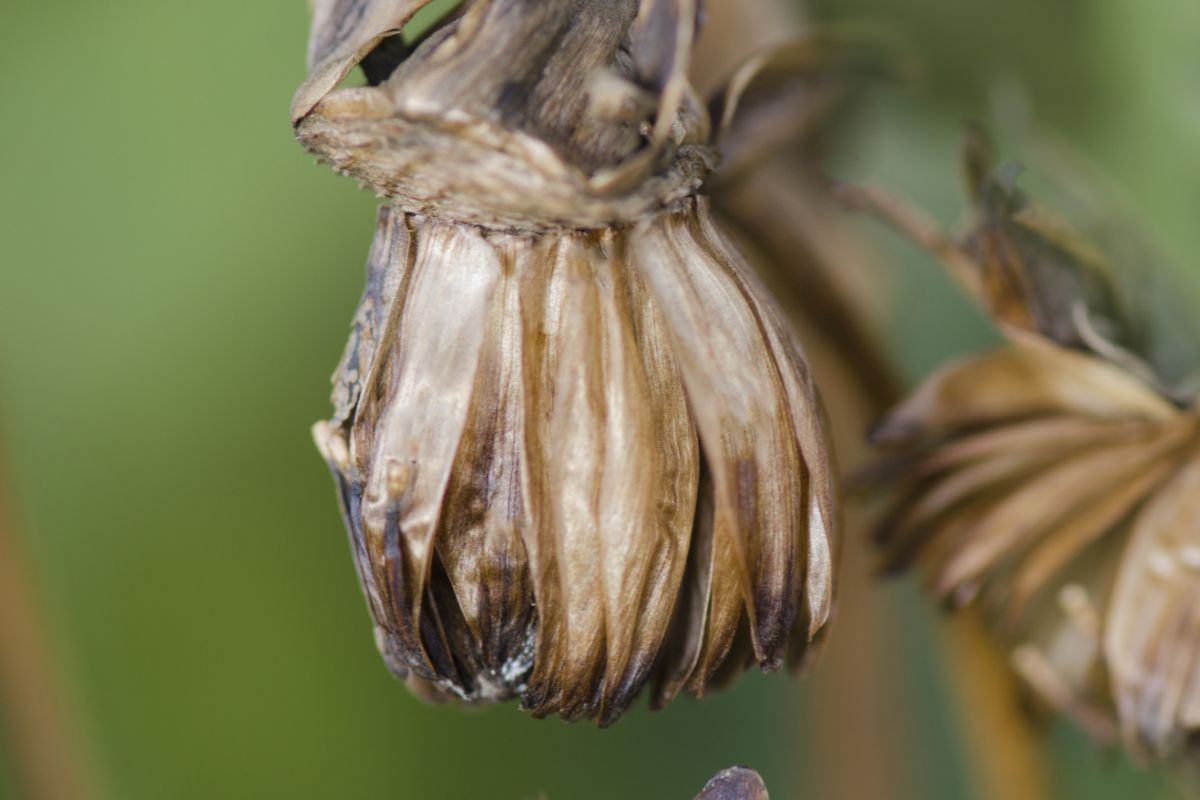

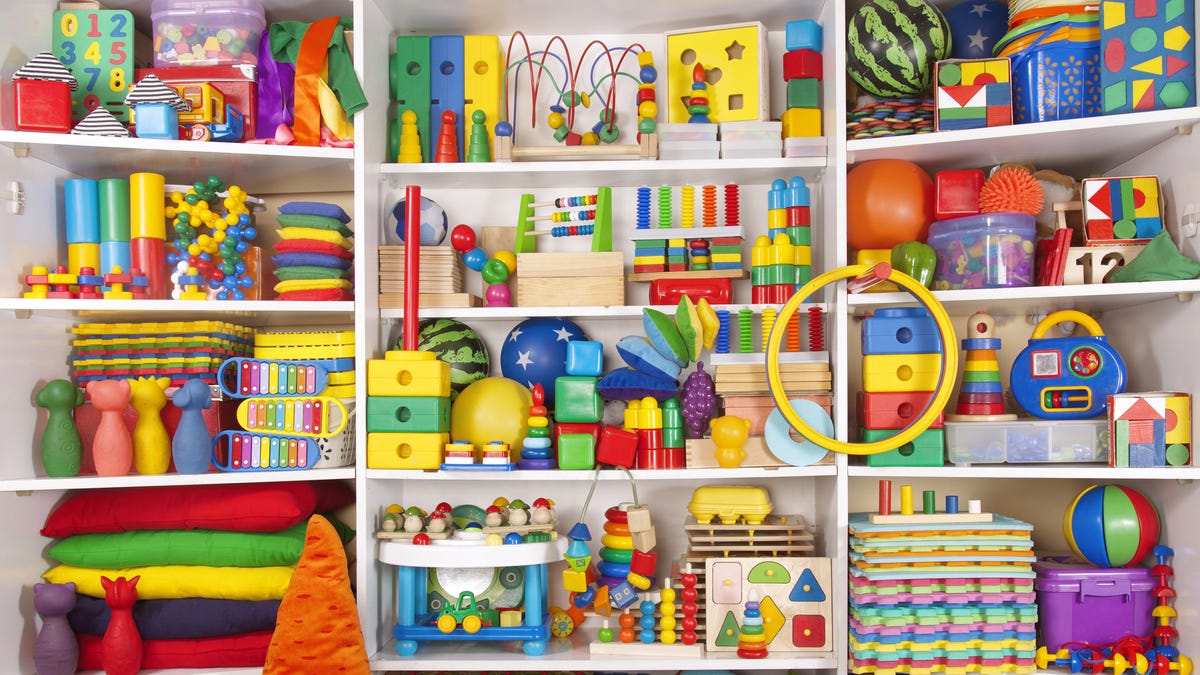
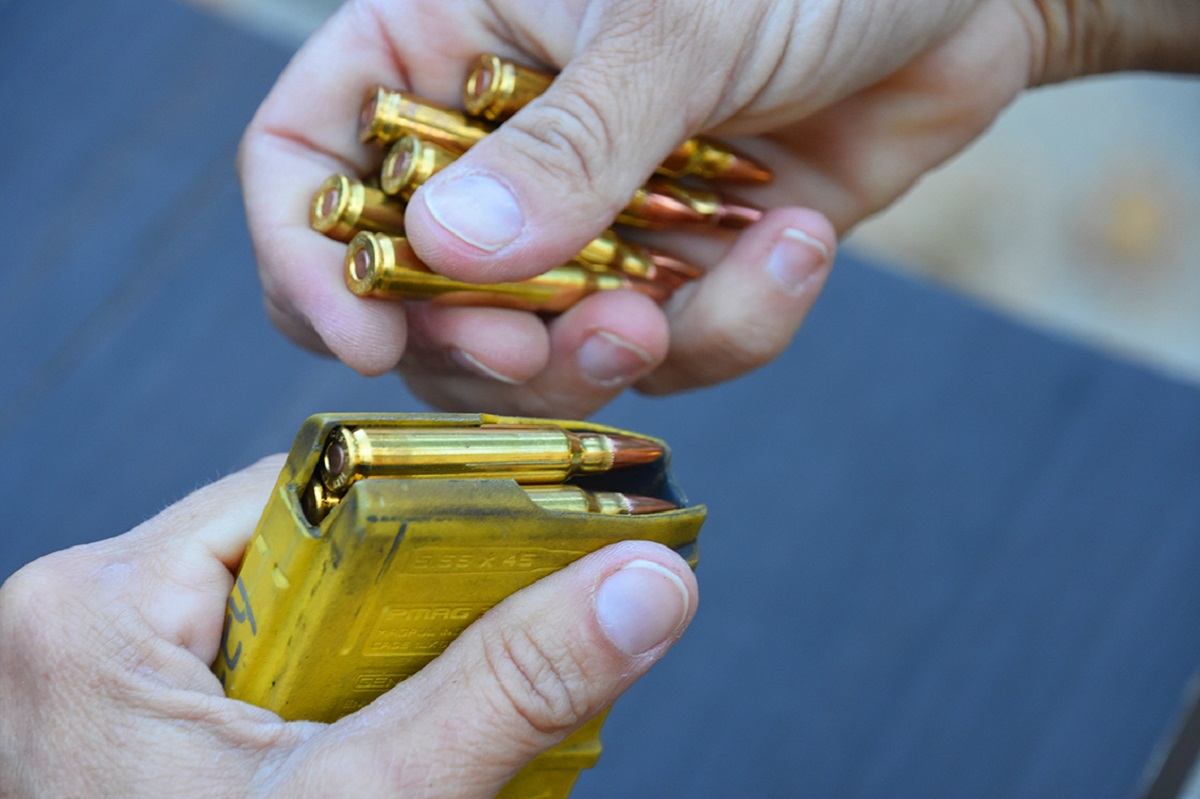
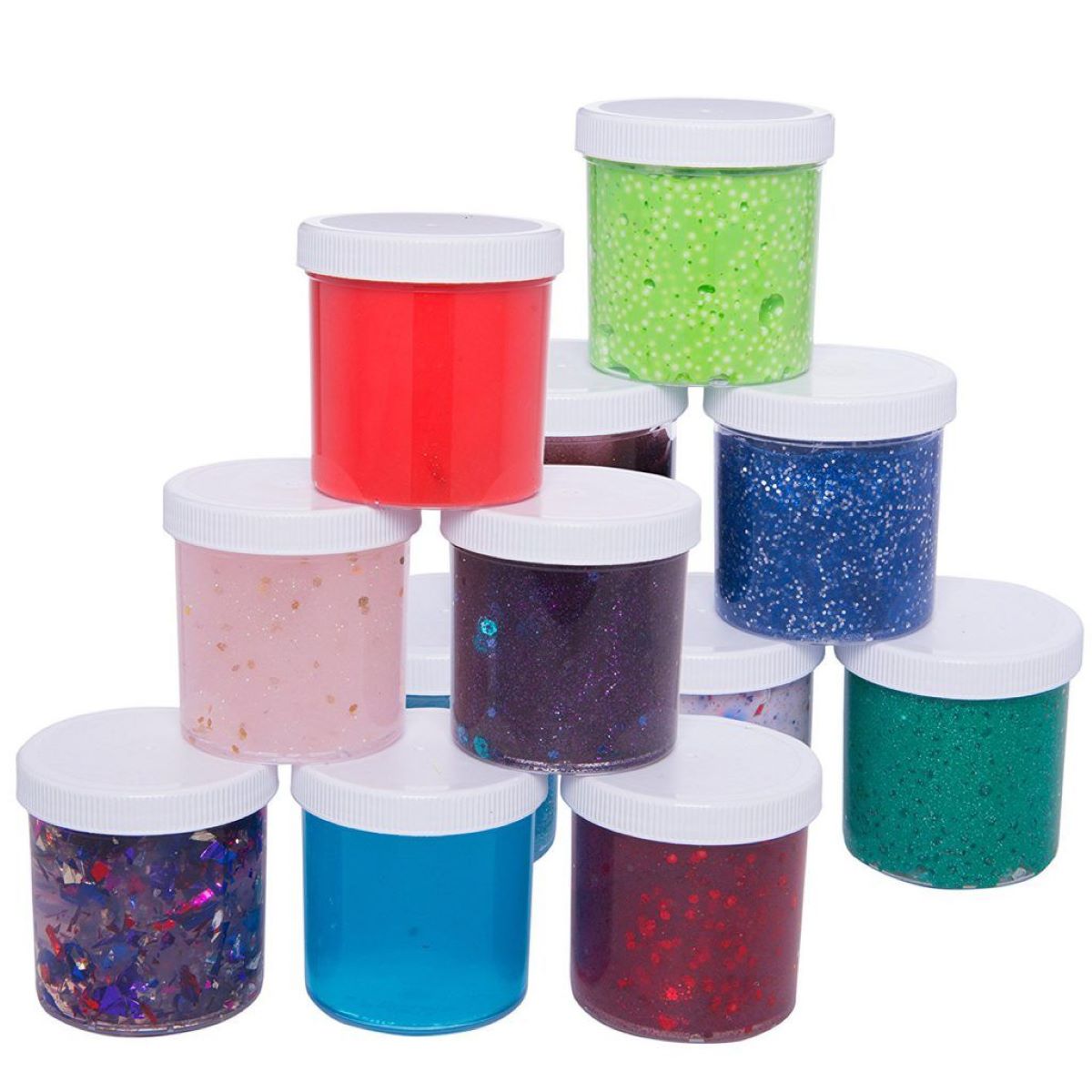

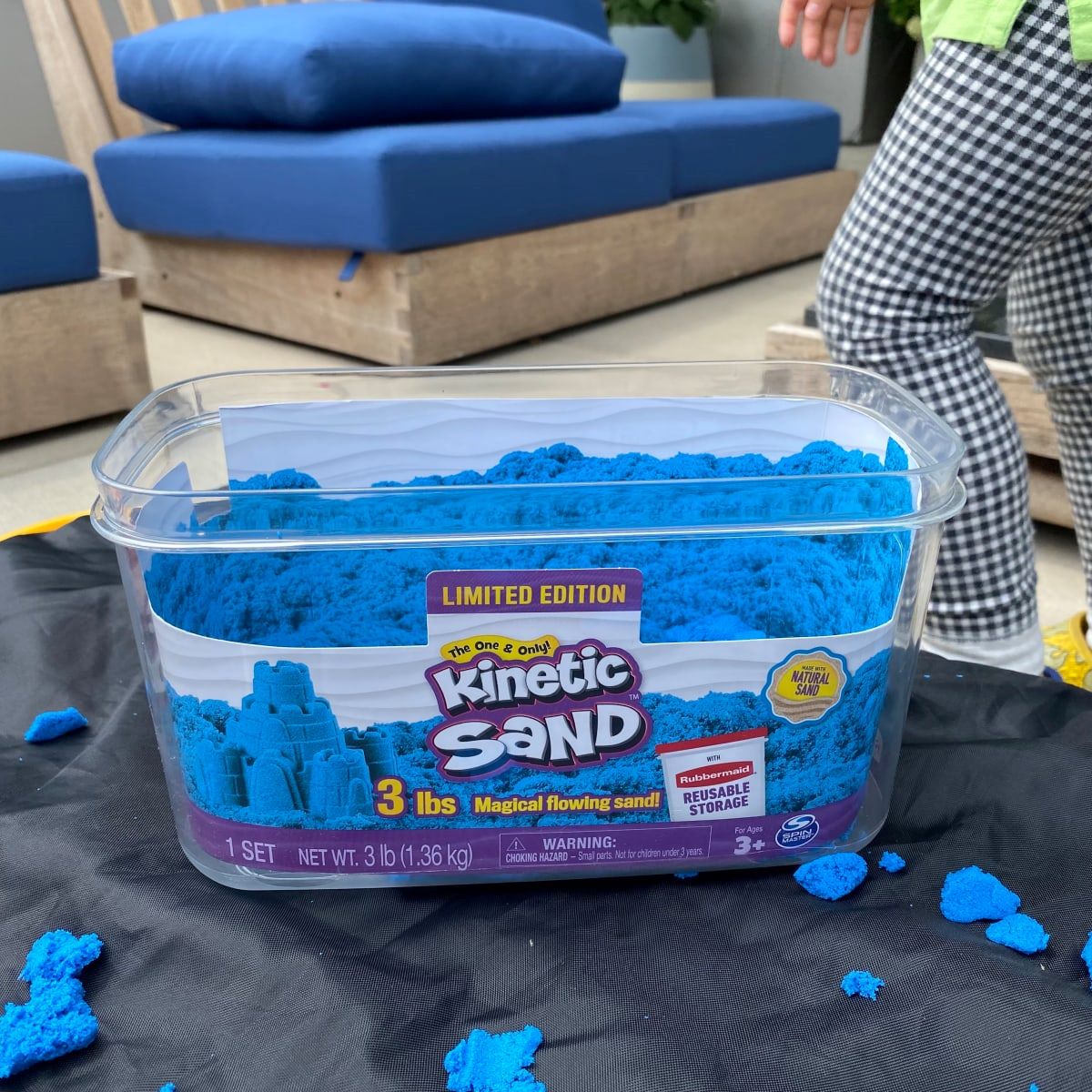


0 thoughts on “How To Store Magazine Collection”